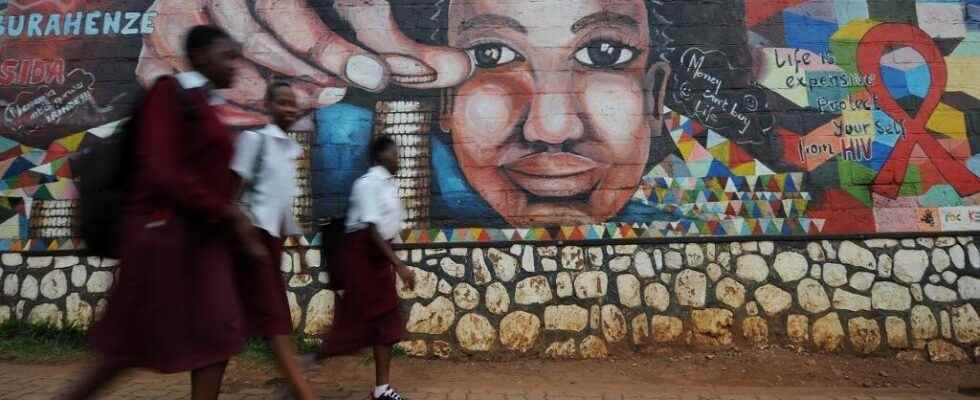HIV-AIDS continues to kill. 650,000 people died in 2021 in connection with the disease. This is certainly less than in 2020 but still far too high compared to the objectives. This is what we learn in the annual report of UNAIDS, published this Wednesday, July 27. A very pessimistic report about the future of the fight against the disease.
” In danger “. The title of the UNAIDS report sets the tone. It is the progress achieved after decades of combating the HIV-AIDS epidemic that is now under threat. Admittedly, the number of new contaminations continued to fall in 2021, there were 1.5 million, but this improvement is less and less pronounced. And it is far from the objectives.
It also masks different dynamics in the world. If the epidemic continues to decline in sub-Saharan Africa, it is progressing elsewhere. Eastern Europe, Central Asia, the Middle East, the Maghreb, Latin America are concerned. And according to the latest data from UNAIDS, this is also now the case in the most populous region of the world, Asia-Pacific.
Africa still the epicenter of the pandemic
Of the nearly 40 million people living with HIV in 2021, more than half are in Africa. The continent, especially in the south and east, is still the epicenter of the pandemic: just under 900,000 new infections were recorded there last year. It is certainly a downward trend but much less marked than before.
These figures, however, hide large regional differences. Southern and Eastern Africa confirm this slowdown in the dynamics, but at the same time, West and Central Africa are experiencing notable progress, with the exception, however, of Congo, which has recorded one of the largest increases in the number of new infections since 2015.
As every year, the UN agency paints a portrait of an ever more discriminating epidemic, which primarily affects women and young girls. One of them is contaminated every two minutes in the world. In sub-Saharan Africa, for example, two-thirds of contaminations last year concerned women or adolescent girls. A young woman there is twice as likely to be living with HIV as a man of the same age.
Access to screening and treatment are still not at the expected levels. In short, the picture is dark. The reason is known: the chronic lack of funding. UNAIDS repeats it year after year, and today there is a lack of 8 billion dollars to fight effectively against HIV. A situation that is all the more frustrating since we now have all the tools that would make it possible to overcome the epidemic.
One of the key stages of success is political commitment at the highest level, lasting, constant, with the prioritization of the response to HIV on the country’s health policy agenda.
Fodé Simaga, director of the science, systems and services for all department at UNAIDS
The global HIV response is in danger.
Progress on prevention has faltered, global shocks have exacerbated risks ahead, and resources for HIV are under threat.
The new Global AIDS Update 2022 highlights the urgent actions needed to get back on track.
— UNAIDS (@UNAIDS) July 27, 2022
